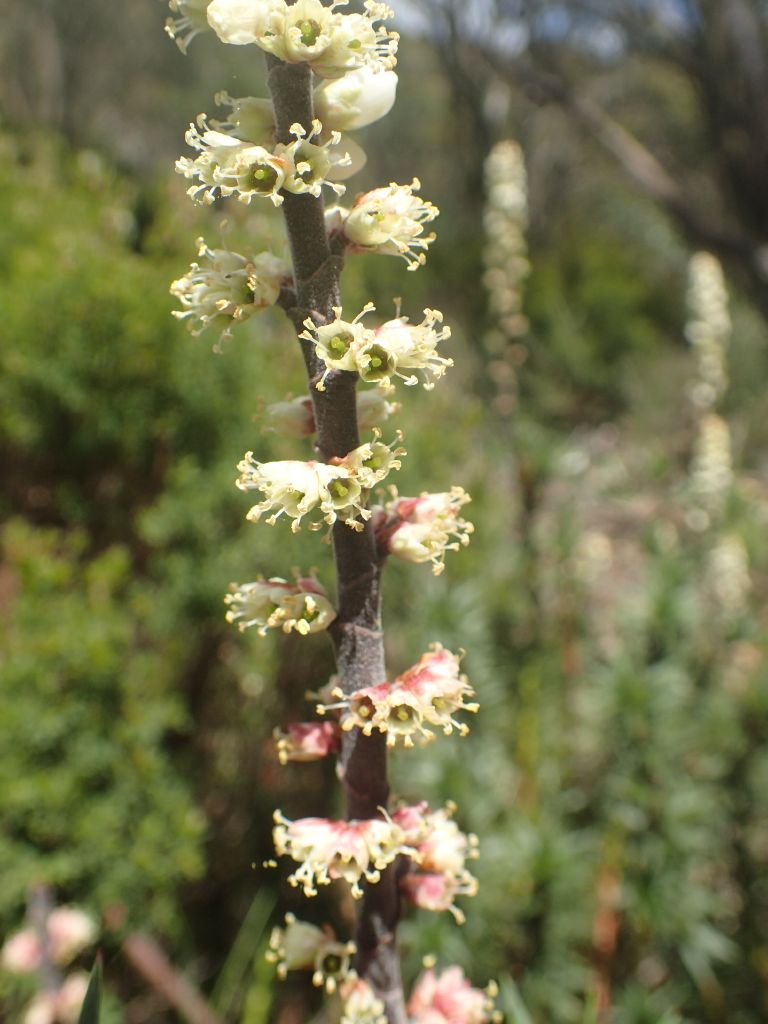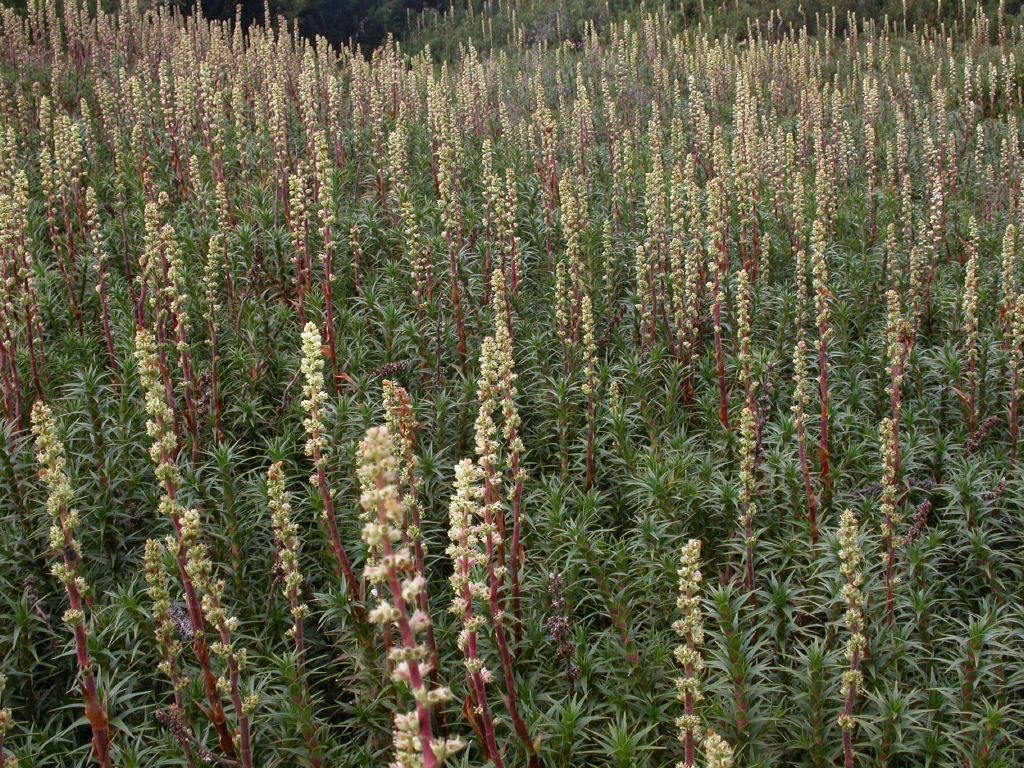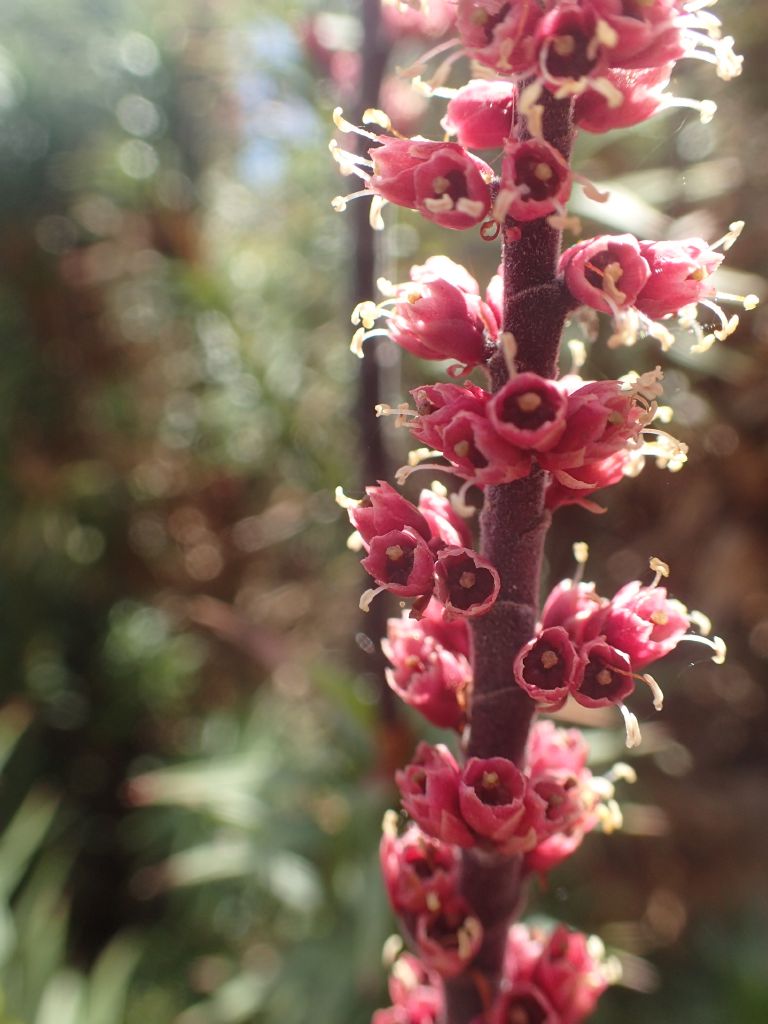Fruits/Seeds
Approximately 3 – 5 mm in diameter.
Field Guide
Improve your identification skills. Download your Candle Heath field guide here!
Dense, multi-branched shrub forming extensive colonies, grows to approximately 50 - 100 cm tall.
Leaves are erect and spread outwardly, shape varies from leaf to leaf but they generally are lance-shaped and have sharp points. All leaves are of a similar bright green colour.
Flowers December to February. The flowers of candle heath branch out above the shrub on a red stalk measuring between 10 - 30 cm. Fragrant, greenish-white flowers bloom on the terminal end of the stalk. The flowers are trumpet-shaped and are 4 - 8 mm long and 4 - 5 mm in diameter.
Approximately 3 – 5 mm in diameter.
Improve your identification skills. Download your Candle Heath field guide here!

First fully open single flower
Full flowering (record all days)
End of flowering (when 95% of the flowers have faded)
Open seed pods containing seeds (record all days)
Climate change will directly affect the ecological communities in which this alpine species resides. An increase in temperature and extreme heat events will reduce viable habitat for this species.


Candle heaths can be used to deter animals in gardens, due to their prickly leaves.